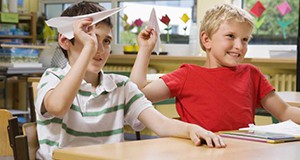Tell me and I forget,
Teach me and I may remember,
Involve me and I learn.
The general goal of healthy parenting and teaching is to produce children and students who can think critically, make good decisions, and become independent, accountable, responsible, and contributing members of society. Part 3 of this Positive Discipline: Behavioral Management Skills for Parents and Teachers series covers tips and strategies to help parents and teachers build critical thinking and positive behavioral skills in children. Several of these strategies that can help parents and teachers achieve these goals through “love and logic” are discussed in this 6-page fact sheet written by Victor Harris, Whitney Fung, Sarah Ellis, and Alison Schmeer, and published by the UF Department of Family Youth and Community Sciences, July 2015. (Photo Credit: Thinkstock.com/iStock/natasaadzic)
http://edis.ifas.ufl.edu/fy1460



